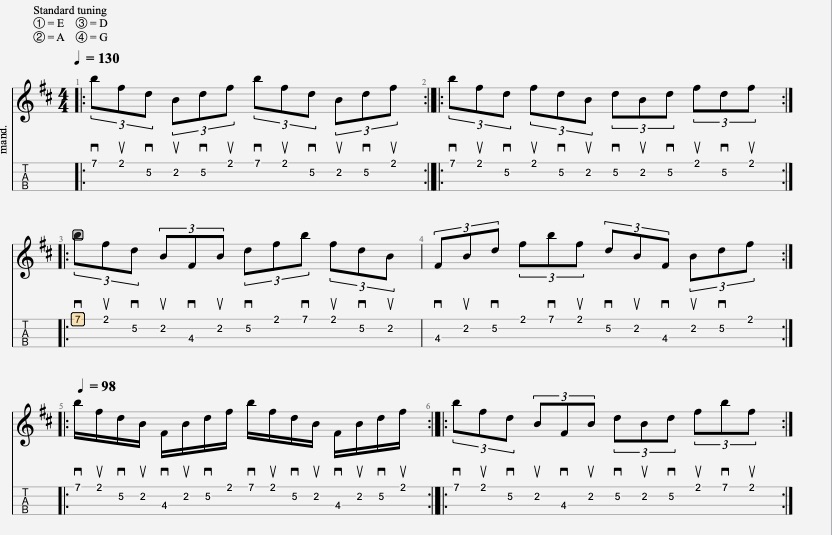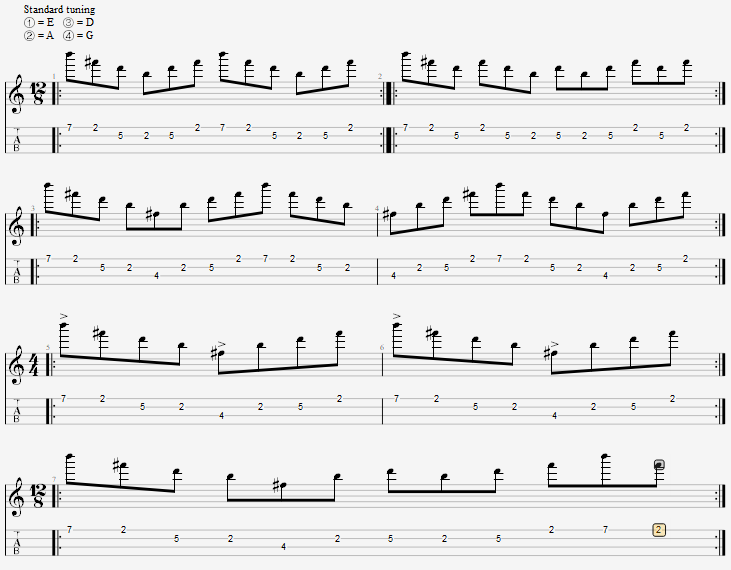Ok here’s an issue that I run into all the time. I’m sure there’s a simple answer for this but it’s just not apparent to me because I’m dense. Let’s say I’ve got a picking pattern and I want to play it with a feel of threes and then change to a feel of four. I don’t want the picking speed to change, just the subdivision. How would you notate that?
A picture is worth a thousand words. Here’s some mandolin tablature:
The first four measures are triplets because the pattern fits that. I’m notating the fifth measure as sixteenths because the pattern fits a feel of four. In order to get Guitar Pro to play this thing back at what would be the same picking speed the whole time, I had to insert a tempo change to 75% of the original speed. You hit play, the notes all come out equal duration. But unless you’re a computer, there’s no way to know that’s what I’m intending.
There’s gotta be a simple way to notate to the performer that I want the note duration to remain constant no matter what the written subdivision is. Is this just a case where you’d simply write that in notes above the score?



 )
)


